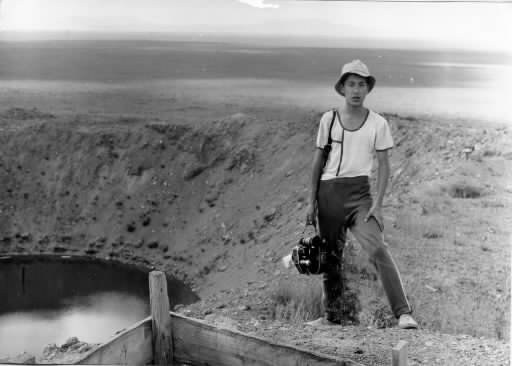4. The Atomic Lakes
Jan. 18, 2013
Chapter 2: Soviet Union
Part 1: The Largest Nuclear Test Site in the Nation
Part 1: The Largest Nuclear Test Site in the Nation
During our investigations in Semipalatinsk, we often heard the curious phrase "atomic lakes." At first our attempts to unravel the mystery met with no success; we were told that the lakes were nothing but a rumor. Then we met Ilyas Iskhakov, who has been engaged in mineral exploration in the area since 1955.
"The atomic lakes? Well, I've seen them a few times, but it's not the kind of place you want to go if you can help it."
Iskhakov travels the plains around Semipalatinsk in search of minerals, in particular gold. His work frequently takes him into the test area. "I haven't counted the smaller ones, but there are two large lakes. One is about a quarter of a mile across and just over half a mile long. It was formed in January 1965 when the ground collapsed after underground testing. They told us it had a force of 125 kilotons; that's the equivalent of ten Hiroshimas," he continued. On his trips around the plains, Iskhakov carries equipment for measuring radioactivity. This proved to be insufficient during the period that atmospheric testing was being carried out, and also later when tests were carried out underground.
"The equipment I had measured up to 1,250 microroentgens per hour, but when I turned it on, the needle just went right off the scale." In May 1965, five months after the larger of the lakes was formed, Iskhakov flicked the switch three miles from the lake shore. His ears were assaulted by an incredible screech through the headphones. This, however, ceased after a short time—the radiation level was so high that it had broken the instrument. Terrified, he abandoned his equipment and beat a hasty retreat.
"The other lake is very big," he continued. "About a third of a mile across at its widest point and three miles or so long. Originally there were lots of small lakes in the area, until they tested a 140-kiloton bomb. That made the ground collapse and one huge lake was formed."
As one who has spent many years engaged in geological surveys, Iskhakov laments the destruction of the environment that the testing has caused. "We took so much trouble to find veins of gold and seams of coal and now we find that we can't even work in the test area," he grumbled, poring over the map in front of him. "The level of radioactivity is appalling and the ground is unstable, too.
Double Exposure
Another major cause for concern is the health of the nomadic peoples, whose livelihoods depend on the horses and sheep that have now been found to be contaminated. A section of the old back road that used to lead to farms within the test area has been blocked off with barbed wire, but in most areas there are only warning signs.
"Stock will wander wherever there is grass, and the radioactive substances they are exposed to end up threatening the lives of those who depend upon them most. Just the thought of it makes me shudder."
Iskhakov's fears are well founded. According to a secret document recently obtained by the Nevada-Semipalatinsk movement, the amount of radiation accumulated in the bodies of sheep in the area is, on average, twenty-two times higher than in other regions. At one location, the concentration was as much as 350 times the normal reading. Other data reported that milk had a concentration twenty-five times the average, and animal bones registered a level from four to thirty times the average.
There is no record of any limits being put on the consumption of meat or milk during the years that the tests were carried out. The residents were therefore subjected to double radiation exposure: directly from nuclear fallout and indirectly from the food they ate.
Iskhakov told us about a type of freshwater fish, similar to carp, known as sazan, which was released into the atomic lakes for research purposes. "There are signs by the lakes saying 'Fishing not allowed, do not eat fish bones.' As if anyone is going to fish in a place like that, let alone eat the bones."
The military has told the people nothing about the contamination of their soil, water, and livestock, and yet they put up futile warning signs in places the residents do not even go. It is this blatant lack of honesty that annoys Iskhakov the most.








